Hunting Miss Deuel
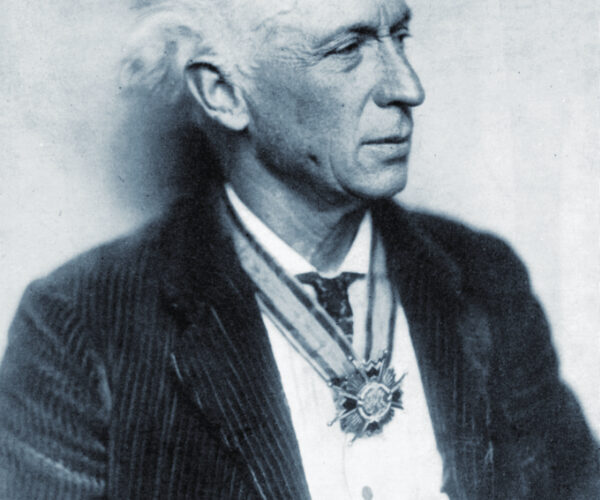 Early Southwestern archaeologist and photographer Charles F.
Lummis, 1917. Photograph by Mojonnier Photo. Courtesy the Palace of the
Governors Photo Archives (NMHM/DCA), neg. no. 007700.
Early Southwestern archaeologist and photographer Charles F.
Lummis, 1917. Photograph by Mojonnier Photo. Courtesy the Palace of the
Governors Photo Archives (NMHM/DCA), neg. no. 007700.
By James E. Snead
On September 1, 1912, Charles Fletcher Lummis—author, “anthropologist,” and impresario of the American West—made a note in his diary. “Hunting Miss Deuel,” he wrote; “en vano.”
Lummis coded his journals in what might today be called “Spanglish,” and this particular scribble referred to Elizabeth Deuel, whom he had met two weeks previously. Deuel was a new student at the School of American Archaeology in Santa Fe, and Lummis one of the leaders of the institution. His use of “hunting” was literal—trying to find her, as she repaired pottery behind the scenes at the Museum of New Mexico—but also metaphorical, with visceral implications unfortunately recognizable to women in anthropology today.
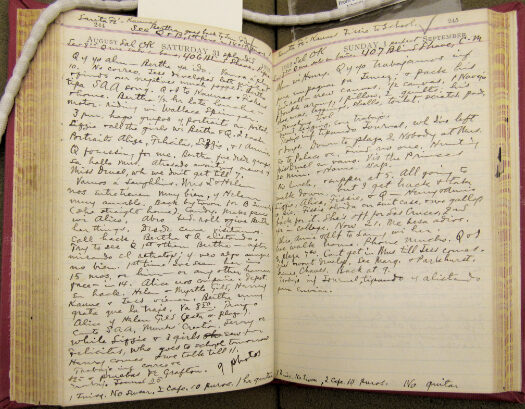
Anthropologists must reckon with the past, and currently the most important of these “pasts” to be reconsidered is our own. Mistreatment of Indigenous peoples, disregard for the communities we should serve, neglect of the collections we hold in trust—all are topics of vigorous debate. The issue of sexual harassment is particularly charged. “No one should have to endure harassment to be able to do the work they love,” notes Stanford’s Barbara Voss, even while documenting that such malign circumstances are widespread.
Unearthing stories of sexual harassment in the history of anthropology is a challenging proposition. Our archives are incomplete and were haphazardly assembled. Most are associated with institutions, and thus men, increasing the difficulty. Personal reticence about sexual matters and other cultural codes makes it tricky to interpret any evidence that does come to light. Authors must also worry about offending gatekeepers—senior colleagues, institutional representatives—in ways that might inhibit future work. The risk of inflicting pain on survivors and families is always near.
Yet telling these stories is essential. Individual experiences are important in themselves, but they also provide threads linking the past to the present conversation. Megan Steffan’s account of the 1931 rape and murder of anthropology student Henrietta Schmerling has attracted considerable attention, exposing a “hidden” story of the field as well as decades of obfuscation and denial.
But to tell a story, it must first be found. The vast majority of women who hoped to become anthropologists in the nineteenth and twentieth centuries were prevented from doing so. We don’t know their names, and by definition most of their lives fall outside our frame of reference. Fragments of narrative are dispersed in files hundreds of miles apart, with few keys to make the connection. And yet they are there, waiting for those links to be made, for a voice to suddenly be heard across the generations.
And one of those stories—one of those voices that anthropologists decided not to hear more than a century ago—is that of Elizabeth Deuel.
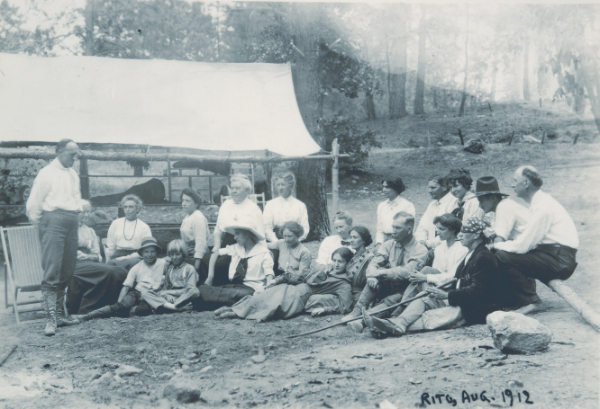
Elizabeth Deuel and the School of American Archaeology
Elizabeth Ham Deuel was born in 1880 to a middle-class family in Dutchess County, New York. As a young adult she attended Middlebury College and the University of Missouri, subsequently working as a teacher. In later correspondence she described herself as restless, writing in a 1913 letter that she liked “to feel the current of life and rush along with it.” One summer, Deuel took a train west to Pasadena to visit her widowed mother, making a touristic stop along the way that accidentally brought her into the new world of American anthropology.
The big event in Santa Fe in August 1912 was the School of American Archaeology’s “Summer Session.” The school was an outpost of the Archaeological Institute of America, intended to provide field training for aspiring students. Under the leadership of Edgar Lee Hewett, however, it quickly evolved into a more public-oriented institution. The Summer Session provided lectures, demonstrations, and field trips to a wide audience, attracting visitors from long distances.
The “personals” column in The Santa Fe New Mexican for August 8 of that year indicated that “Miss E. Deuel of Concord, N.H., is stopping here for a few days on her way to the coast.” The array of cultural events quickly drew her in. On the surface, the School’s programs seemed particularly welcoming to women. Women of the Santa Fe elite funded Hewett’s endeavors: Their daughters participated in the excursions and they hosted receptions in the state museum. Teachers were also involved, such as Maude Hancock, a graduate of the New Mexico Normal School, who attended the Summer Session before taking up her classroom duties in Alamogordo.
It is likely that Deuel was in the audience on August 12 for a presentation anticipated by many as the highlight of the Summer Session’s schedule. On stage was Charles Lummis, a familiar presence in Santa Fe, probably dressed in his notorious corduroy suit. He wore a kerchief around his eyes and was said to be blind as a result of a tropical disease. The New England native had spent thirty years in the Southwest serving as a reporter, writer, magazine editor, and “booster.” This particular event featured his own guitar playing and the live recording of Native American songs. During the evening, according to his diary, “not a soul moves.”
Lummis projected an eccentric persona that masked an ego-driven promoter bent on establishing dominance over those closest to him. While a professor at Harvard, he seduced his student Dorothea Rhodes. In the course of their marriage, she negotiated her husband’s capricious cruelty even while becoming one of the first woman doctors in Los Angeles. In 1891, she was discarded for a younger woman, Eve Douglas, who seems to have been perceived as more compliant. Not surprisingly, this marriage was also marked by infidelity and turbulence. The couple separated only after the birth of four children, with agonizing divorce proceedings marked, among other things, by feigned health crises. The patron Phoebe Hearst, who regretted supporting his projects, saw through the act. “Of course Lummis’s ‘blindness’ was a fake,” she wrote to Eve in 1911, “like everything else he does!”
A few days after Lummis’s Santa Fe performance, the Summer Session moved 20 miles west to a camp along the Rito de los Frijoles, in what is now Bandelier National Monument. Students slept in tents and were fed by Ida Mae Abbott who, with her husband, ran a small ranch in the valley. Lummis and other veterans occupied cliffside “caves” that were part of the ancestral Tewa and Keres villages being excavated under the auspices of the School, largely with Native American labor. Days were spent inspecting the work, with evenings devoted to lectures around a campfire.
Deuel’s account of the Summer Session has not been found, but her name first appears in Lummis’s diary on August 23. Thereafter he jotted down references to her on an almost daily basis. His divorce from Eve had been finalized only a few months earlier, and he was clearly making plans. When the Summer Session ended, Lummis moved on to more fieldwork in the nearby Jemez Mountains, and then to his home in Los Angeles, but his mind was as much on Deuel as on any of his other projects.
For her part, Deuel, to the probable surprise of her family, decided to stay in Santa Fe. She was drawn into a circle of young Santa Fe women associated with the School—Ruth Laughlin, Kate Muller, Amelia McFie—all of whom faced their own opportunities and challenges with anthropology. Deuel devoted the fall of 1912 to study and work in the museum, and made plans to build a house. It is apparent that she preferred anthropology and the Southwest to the narrower opportunities she faced as a teacher back in New Hampshire.
Despite these apparently promising circumstances, however, Deuel remained peripheral to School projects-in-progress. One potential mentor, Barbara Freire-Marrecco, passed through Santa Fe only briefly and the two had no opportunity to establish a relationship. Hewett traveled constantly and was unavailable. The staff member most reliably present was John Peabody Harrington, who already had a significant reputation as an anthropological linguist but had little responsibility for School affairs. Deuel was prevented from assisting in fieldwork because no female companion could be recruited. A proposed expedition to the Yucatan, where she would join Sylvanus Morley and his wife, Alice Williams Morley, generated excitement, but it also fell through.
The neglect of Deuel by the School’s leaders had the unfortunate effect of convincing her to turn to Lummis. She clearly sought a mentor: her letters address him as “cacique,” a term of respect in Pueblo communities, and one that Lummis embraced. His letters to her, however, were from the start intended to cultivate a more personal relationship. When she suggested that they were a bit too “forward,” he responded that it was her “own fault. You should not make anyone wish to write you so.” She clearly understood such tactics, and this disappointment added to the realization that there was no place for her in Santa Fe, after all.
Elizabeth Deuel and the University of Chicago
Dismayed by the attentions of Lummis, and disappointed with the School, Deuel still did not give up on anthropology. At Hewett’s suggestion, she applied to the University of Chicago to study under Frederick Starr. To be as prepared as possible, however, she decided to conduct a little research on her own, visiting to the Pueblo of Zuni in the spring of 1913 to learn about the Zuni language. She thus joined the increasingly long list of outsiders intruding into the Zuni community for their own benefit, and Deuel’s letters demonstrate that she shared prejudices about Native Americans expressed by most of her contemporaries. But Deuel responded positively to the people she met. One boy taught her to make “string figures,” and she was pleased when another described her as “crazy like a butterfly.”
While at Zuni, Deuel also worked through her conflicted feelings about Lummis. Alone on a snowy day, fighting a cold and sitting in front of a “little old ’dobe fireplace,” she perceived the situation somewhat differently than she had a few months before in Santa Fe. In the field on March 13, 1913, she wrote him, “… one comes at last to realize something of life and its meaning… So, Señor, I am ready at least to think about ‘graduating into life’”
Lummis seized the moment and dispatched a profession of love. He sketched an artistic vision of their married life to come—what he referred to as their “Blend.” “I can invite you only to poverty,” he wrote from California on March 19. “But never starve for fodder, & you would never go hungry for Love.” But he would not come to her, pleading unavoidable obligations. Whether or not her vision of the future matched what she was reading, Deuel sought resolution, and took a train west.
Deuel only stayed in California for five days. She caught up with her mother in Pasadena, but also spent considerable time with Lummis at his eclectic house, “El Alisal” (The Sycamore), apparently discussing the future. It was not a successful conversation. “I allowed the person in question to see me…” she wrote a friend in an undated letter. “This did not improve matters.”
Another letter, written after the visit, clarifies—to Lummis himself—what happened at El Alisal.
I’ve tried to write you before but the memory of the brutal way you kissed me has left me still as stunned and wordless as that Saturday afternoon.
How could you do it? You are unusual in the fineness and delicacies of your feelings and in expressing them. When you stroke my hair and call me ‘bird’ I come very close to loving you. But when you kiss me like a vulture it leaves me sick with loathing…
Somehow it has spoiled everything.
Lummis’s diary recorded the event succinctly on April 5, 1913: “Robo un beso”—“stole a kiss.”
By this time the spring term at Chicago was underway, and Deuel found her “preparation” at the School to be prophetic. Starr put her to work organizing Asian ethnographic collections but provided no formal guidance, showing the same lack of interest that had characterized her Santa Fe experience. Her account of a classroom episode, sent in a letter to Lummis in June 1913, indicates—albeit in a humorous vein—how Starr’s perspectives on women shaped his relationships with his students.
Oh, Joy! Professor Starr almost asphyxiated himself after class today. It all began about woman suffrage. After expressing his view that woman should have the ballot as means of defence [sic] he went on to say that if she continues on her mad career of competing with men then the race will tend toward extinction. His face turned purple and he wailed pathetically. ‘Let them try it I say, let them try it’ he was still wailing as I fled down the stairs and into the open.”
For his part, Starr included Deuel’s name in his “daily record book” only twice, with minimal detail. She also sought opportunities at the Field Museum, and at first circumstances seemed more promising there. But the only substantive offer was for her to help cataloging “some wealthy man’s collection” with no meaningful implications. By early summer it was apparent that Chicago, just like Santa Fe, offered nothing in the way of substantive engagement with anthropology. Illness prevented her from taking the end-of-term exams, and, while she got passing grades, there is no evidence that Deuel ever returned to the University of Chicago or was awarded a degree.
Elizabeth Deuel in Southern California
While Deuel was knocking on doors in Chicago, Lummis was rearranging his household at El Alisal. He kept a punishing schedule, working late and sleeping little, a routine supported by a series of live-in secretaries. He preferred to hire young, unattached women, often of fragile social status and without family nearby. They were provided room and board, assisted with other household tasks, and were expected to be available throughout the night, long after everyone else had retired.
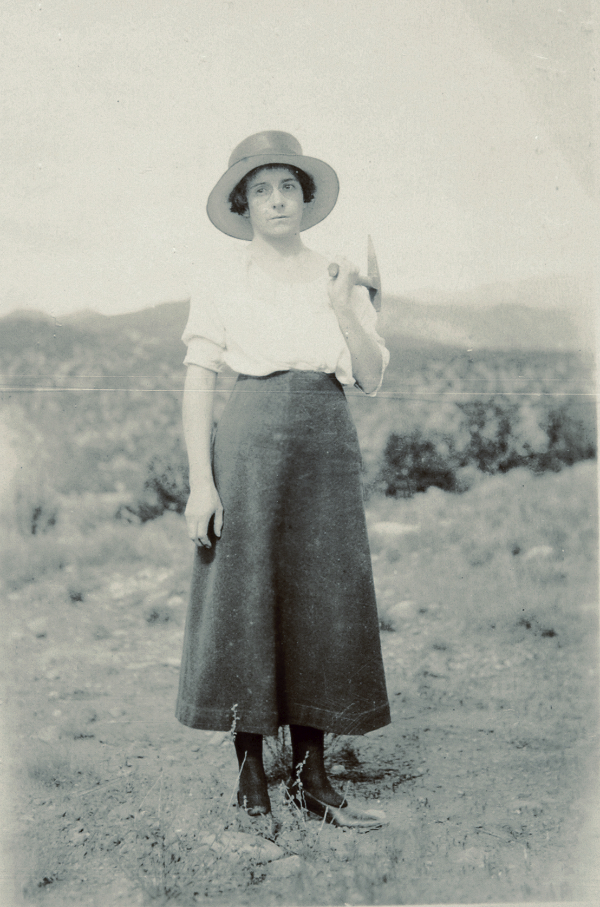
Correspondence from Lummis’s files make it clear that some of his secretaries were also sexual partners. He relied on the vulnerability of these women to public censure and scandal for their “cooperation.” In 1913 his secretary was Lillian Gildersleeve, a young woman from Santa Fe with whom he also had a sexual relationship. Eventually she proposed marriage in a letter on July 8, 1913:
Regardless of those stupid laws of society that give a woman the alternative of—marrying whoever asks her—and—remaining a fruitless, good-for-nix parasite all of her days, I offer myself to be your wife.
Even while Gildersleeve was composing this humiliating request, however, Lummis was recruiting Deuel for the same position. They had resumed correspondence in the late spring: Deuel seems to have been motivated by loneliness in Chicago and disappointment at the lack of opportunity there. “Deuel reverses & recants,” notes Lummis’s diary for May 31. The tone of her letters written that summer ranged from pensive to flirtatious. He responded by listing the characteristics he found desirable in a spouse, emphasizing the importance of children. Unless a woman felt the “Mother instinct,” he admonished, “…she never makes the right wife.”
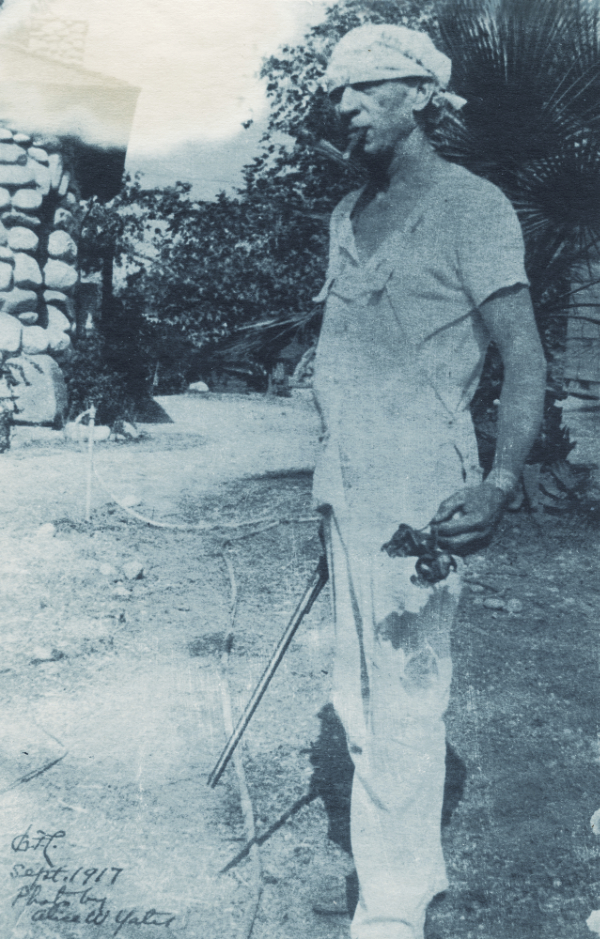
After the Chicago debacle, Deuel spent four months recuperating at her sister’s home in New Hampshire. But she would eventually have to return to southern California to see her mother—and reckon with Lummis. California also harbored the one other male anthropologist who she considered a friend: John Peabody Harrington. Harrington had returned to his home state with thousands of pages of notes and several unfinished projects. Deuel sympathized with his professional challenges, and the two exchanged Santa Fe gossip. It seems that this was one relationship established at the School that she hoped to maintain.
In the fall of 1913, Deuel’s view of the future was obscured by Lummis, and her letters to him became more direct. She was candid about her dislike of his drinking, her concern about where she stood with his children, and his sexual aggression. If they should meet to discuss personal matters, she warned, “…you must promise me that you will not, in any way, shape, or manner, make love to me unless I say you may. I can not endure it. … I tell you frankly that I have no intention of marrying you … Spinsters are so much freer…!”
In the meantime, confidential inquiries were being circulated about whether or not Lummis’s home was “a fit place for a young woman.” Lummis learned of this via the rejected Lillian Gildersleeve, who had returned to New Mexico but remained an ally. “You know,” she wrote, “…that I have never divulged a thing you would not have known,” pledging to “stand by you through thick and thin,” although she did not reveal the source of the inquiries.
Deuel returned to California on November 24 and immediately re-entered the charged environment of El Alisal. Lummis, in his diary, described her as “muy rejiga”—rebellious. But he intended to complete the seduction. In addition to his formidable charisma, he planned a dramatic display of power and influence via an event nicknamed “El Alcalde Mayor.” These semi-regular festivities, named after the ancient tree that had given El Alisal its name, reinforced Lummis’s alliances among the elite of California.
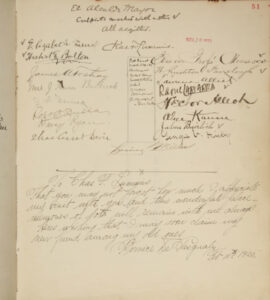
This particular El Alcalde Mayor took place on November 30, 1913. Deuel sat at Lummis’s right hand. Joining them around the table were politicians, cultural celebrities, and academics, including renowned borderlands historian Herbert Bolton, former State Senator Robert Nelson Bulla, and cellist Elsa von Grofe-Menasco. Also present was the superintendent of the city’s schools. The seat of the hostess was occupied by Louise Miller, who had succeeded Gildersleeve as secretary. Thus Deuel was introduced to the community in which, as Lummis’s wife, she would play a distinctive role, although ambiguous as to how her interests in anthropology might be accommodated.
Deuel did not, however, respond as Lummis would have anticipated, and the change in her perspective was dramatic. “You may be surprised that I went to that house,” she wrote Harrington two weeks after El Alcalde Mayor, “…but I did. I went on a quixotic errand which I fear will be fruitless and which has earned me his hatred and malice forever. But I prefer that to the opposite emotions.” A subsequent letter described the outcome of this encounter.
At present I am very happy for my errand at Mr. L’s was not fruitless. On the contrary that unspeakable man will lose a wife and a secretary at the same time. I believe he had so fascinated the girl that she would have married him. But all illusions concerning him have left her forever more…
Why God permits such a creature to exist I cannot understand.
Deuel had clearly discovered evidence of Lummis’s predatory behavior. Perhaps she was speaking of herself in the letter, as the fascinated girl. But the specifics of the account suggest that her concern was directed toward other, more vulnerable women in the house. These would have included the young Alice Kaune, daughter of Santa Fe friends, who had been visiting El Alisal for some weeks. Deuel would have met the Kaune family in 1912, and was perhaps aware of some circumstance that alerted her to the risk.
Shortly afterwards, Deuel returned Lummis’s letters, and never communicated with him again.
Lummis was unfazed. Literally within hours of Deuel’s departure he rekindled an affair with a former secretary, Gertrude Redit, who had the misfortune of becoming his third wife in 1915. Kaune returned to Santa Fe, but she was not the last occupant of El Alisal to receive unwanted attention from its owner. That Lummis kept Deuel’s letters, despite the insights they provide into these circumstances, says a great deal about his fundamental narcissism.
For her part, Elizabeth Deuel persisted. She remained in southern California, at first living with her mother in Pasadena. She kept in touch with Harrington; at his advice, Deuel took typing lessons, in part because the skill was useful for research assistants. Harrington’s peripatetic fieldwork led him to the Colorado River in the Spring of 1914, where he was documenting the Mojave language. Deuel saw the opportunity. “It would really be worth coming,” she wrote him, “…if you would dare to do it. … Could you use me?” He must have assented, since on June 1 she arrived at Needles, California, ready to get to work.
The twist of fate that followed seems particularly cruel, since even as Deuel was disembarking from the train Harrington came down with typhoid fever. Technically he was still working for Hewett, so Harrington sent him a pathetic cable imploring rescue. But Deuel was first on the scene, realized the seriousness of the situation, and dispatched Harrington back to his family. “I have thought of many little things I might have done to make your journey more comfortable,” she wrote two days later, on June 4. “I trust the porter made down your berth for you at once and found you a drinking cup.”
Hewett arrived on the scene a few days later. Although he must have been aware of the details, he exaggerated his own role without mentioning Deuel, claiming that he had picked up Harrington at Needles himself. Harrington’s convalescence lasted several months, during which his various patrons implored him to return to work.
Meanwhile, Deuel was left on the Colorado River on her own, with minimal instructions. After some hesitation, she “invested in a small camera and a broad brimmed hat and crossed the river” to visit the community where Harrington had been working. She wrote to him on June 11:
As you prophesied I like the Mohave people very much and, as usual, I like the old women best. This afternoon I have spent out in the wheat field with three of [them]… I have helped to pick the wheat, heads, trample them out and winnow them. During this they taught me various Mohave words.
Flooding made conditions difficult, however, and soon Deuel found it necessary to return home. She visited Harrington later in the summer, and the two corresponded about ethnographic topics into 1915. But when he finally returned to the field, Deuel was not involved.
It is not coincidental that 1915 was also the year that Harrington met Carobeth Tucker, a student of anthropology enrolled in a class he taught at the Panama-Pacific Exposition in San Diego. She resembled Deuel in her eagerness for deeper participation in her mentor’s projects, but within a few months had also established a closer emotional and physical relationship with him. Harrington quickly put her to work. “I am keeping very busy with Taos and the typewriting,” she wrote him on September 15 of that year. “The verbs are going to be almost as interesting though perhaps not so complicated as the pronouns.”
This sequence of events makes it clear that Harrington sought—in the words Deuel used for Lummis—“a wife and a secretary at the same time.” He married Tucker in 1916, and her 1975 autobiography Encounter with an Angry God (as Carobeth Laird) describes these circumstances with devastating clarity. Her history is a reflection of what might have been for Deuel. But by avoiding a life of penury and exploitation by Harrington, Deuel also left her final “opportunity” in anthropology behind.
These circumstances were made doubly clear in a letter sent back in the fall of 1912, when both Deuel and Harrington were working in Santa Fe. To a friend, Harrington fretted over the state of his notes, but anticipated assistance: “This typist will probably be a young woman from Illinois named Deuel,” he wrote, with relief. “She is employed at present mending cliff dweller pottery[.] … Hewett told me … that he has made her typist and stenographer for the school and that she will typewrite … for me.” That this arrangement was unknown to Deuel, who at the time was anticipating a more substantive assignment, makes Harrington’s offhand remark particularly infuriating.
Incredibly, however, Deuel continued to search for a career in which she could find meaning. She worked for a few years in the new Museum of History, Science, and Art of Los Angeles. But when the curator left in the wake of a scandal, Deuel found herself at odds with the museum administration, and was fired. That she considered taking legal action against the museum, as she made clear in letters from fall 1917, is an indication of her increasing frustration with the situation. Afterwards she turned to magazine writing, but was not particularly successful.
One discovery that Deuel did make in Los Angeles was a partner: Mary N. Dubois (or Du Bois), who she described as “an art critic in this city.” Within a few months the two were sharing quarters. They lived together for thirty years thereafter, first in Pasadena and then in San Luis Obispo County, where they are buried under the same headstone in the Arroyo Grande Cemetery.
Whether the relationship between Deuel and Dubois was a “Boston marriage” or something different remains impossible to define. The language used by Deuel in her previous correspondence could be interpreted as providing insight into her sexuality. One of her rejections of Lummis’s advances characterizes her resistance. “It isn’t because it’s you,” she wrote in February 1913.
It’s simply that I’m not a man’s woman I guess. I always astonished when a stray masculine being comes along and mistakes me for one[.] … There’s a queer little kink in my makeup to which you appeal rather powerfully but that kink doesn’t happen to be the ruling element.”
Coda
Elizabeth Deuel wrote with disarming clarity, something evident in the letters dispersed through various archives. But that we know little about her beyond these words inevitably affects our perceptions. Critically, we have no correspondence between Deuel and other women, which means that we see her through the veil of engagement with men. These letters demonstrate skill at code shifting, an obvious survival strategy for an ecology in which she had little power. But however we interpret her inner life, the archival record for her experiences with anthropologists can hardly be clearer.
One among many additional ironies is that Deuel’s younger brother, Thorne Deuel, actually had a career as an anthropologist. He studied with Frans Boas at Columbia and eventually served as the director of the Illinois State Museum. The two Deuels had been close: The influence of Elizabeth in her brother’s choice of career and subsequent pathways taken can only be surmised, as well as her personal reaction to his success in an endeavor that she also pursued.
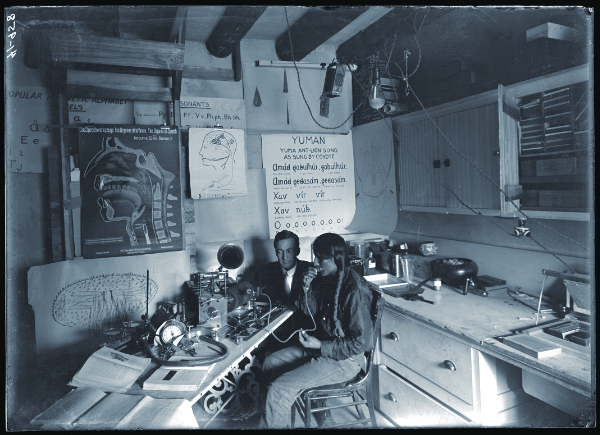
Deuel’s story tells us that sexual politics, including harassment, must be understood as part of the deep structure of the discipline of anthropology. It also indicates that evidence for such behavior is indeed preserved in our records. Whether or not this dismal legacy is useful for those who are addressing harassment in the modern context, the similarity of the words and deeds of Lummis and others in this story with the reported actions of many in the current era are not surprising.
The focus of attention, however, should be on Elizabeth Deuel, and the impact of overt and covert harassment on her desire to become an anthropologist. “At present,” she wrote Harrington on December 14, 1913, “I am at a standstill as it seems necessary to play accompaniments to other people’s lives and to let my own wait a bit.”
That wait, it turned out—at least in the context of anthropology—was forever.
—
James E. Snead is professor of anthropology at California State University, Northridge. A 1980 graduate of Santa Fe High School, he is an archaeologist and historian with diverse interests concerning the U.S. Southwest.
